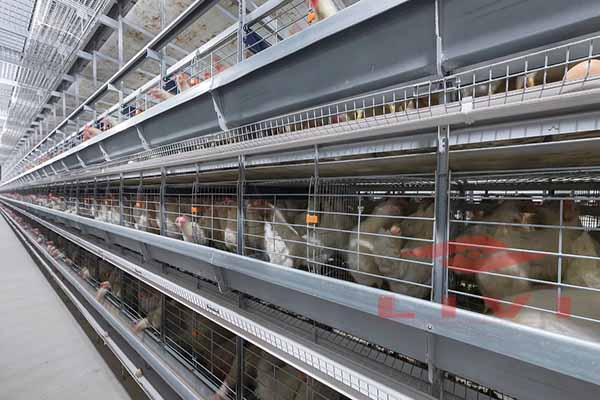The Impact of Humidity Control on Chicken Growth in Uganda Chicken Farms
Time : 2025-06-29
The poultry industry in Uganda has been experiencing significant growth in recent years, with chicken being a staple protein source for many. Among the various factors that influence chicken growth, humidity control plays a critical role. This article delves into the impact of humidity control on chicken growth in Uganda’s chicken farms, highlighting the importance of maintaining optimal humidity levels and discussing the use of professional poultry equipment.
Introduction to Humidity Control in Poultry Farms
Humidity control is a crucial aspect of poultry management, as it directly affects the health, growth, and overall performance of chickens. In Uganda, where the climate is characterized by high temperatures and humidity, managing these conditions becomes even more challenging. The ideal humidity level for chicken growth is between 40% and 60%, with slight variations depending on the species and age of the chickens.
The Importance of Humidity Control
1. Preventing Health Issues: High humidity can lead to various health issues in chickens, including respiratory diseases, dermatitis, and coccidiosis. By maintaining optimal humidity levels, poultry farmers can reduce the incidence of these diseases, ensuring healthier and more productive flocks.
2. Promoting Growth and Feed Conversion: Optimal humidity levels can enhance chicken growth rates and improve feed conversion rates. When chickens are in a comfortable environment, they are more likely to eat, grow, and develop at a faster pace.
3. Energy Efficiency: Proper humidity control can lead to energy savings in poultry farms. By minimizing moisture loss through evaporation, farms can reduce the need for heating or cooling systems, thereby lowering energy costs.
Challenges in Humidity Control in Uganda
Uganda’s climate presents unique challenges for humidity control in chicken farms. The high humidity levels during the rainy season and the extreme heat during the dry season can both have adverse effects on chicken growth. Additionally, the lack of specialized equipment and knowledge in many poultry farms further exacerbates the problem.
The Role of Professional Poultry Equipment
Professional poultry equipment plays a crucial role in maintaining optimal humidity levels in chicken farms. Here are some key pieces of equipment and their functions:
1. Humidity Meters: These devices measure the humidity levels in the poultry house, allowing farmers to monitor and adjust the environment as needed.
2. Ventilation Systems: Proper ventilation is essential for maintaining optimal humidity levels. It helps in controlling the moisture content in the air and in regulating the temperature.
3. Dehumidifiers: These systems remove excess moisture from the air, reducing humidity levels and preventing the growth of mold and bacteria.
4. Heaters and Coolers: In regions with extreme temperatures, heaters and coolers can be used to maintain a comfortable environment for the chickens.
Case Studies and Best Practices
Several poultry farms in Uganda have implemented effective humidity control measures and have seen significant improvements in chicken growth. Here are a few case studies and best practices:
1. Farm A: This farm installed a dehumidifier and a ventilation system. The humidity levels were consistently maintained within the optimal range, resulting in reduced disease incidence and improved growth rates.
2. Farm B: By training their staff in humidity control techniques and using humidity meters, this farm was able to identify and address humidity-related issues promptly, leading to better overall performance.
3. Best Practices:
– Regular maintenance of equipment to ensure optimal performance.
– Training farm staff on humidity control techniques.
– Monitoring humidity levels daily and making adjustments as needed.
– Implementing biosecurity measures to prevent disease outbreaks.
Conclusion
Humidity control is a vital component of successful chicken farming in Uganda. By utilizing professional poultry equipment and implementing best practices, poultry farmers can create an environment that promotes chicken growth, reduces disease incidence, and improves overall farm productivity. As the poultry industry continues to grow in Uganda, investing in humidity control will be crucial for its long-term success.
Tags












